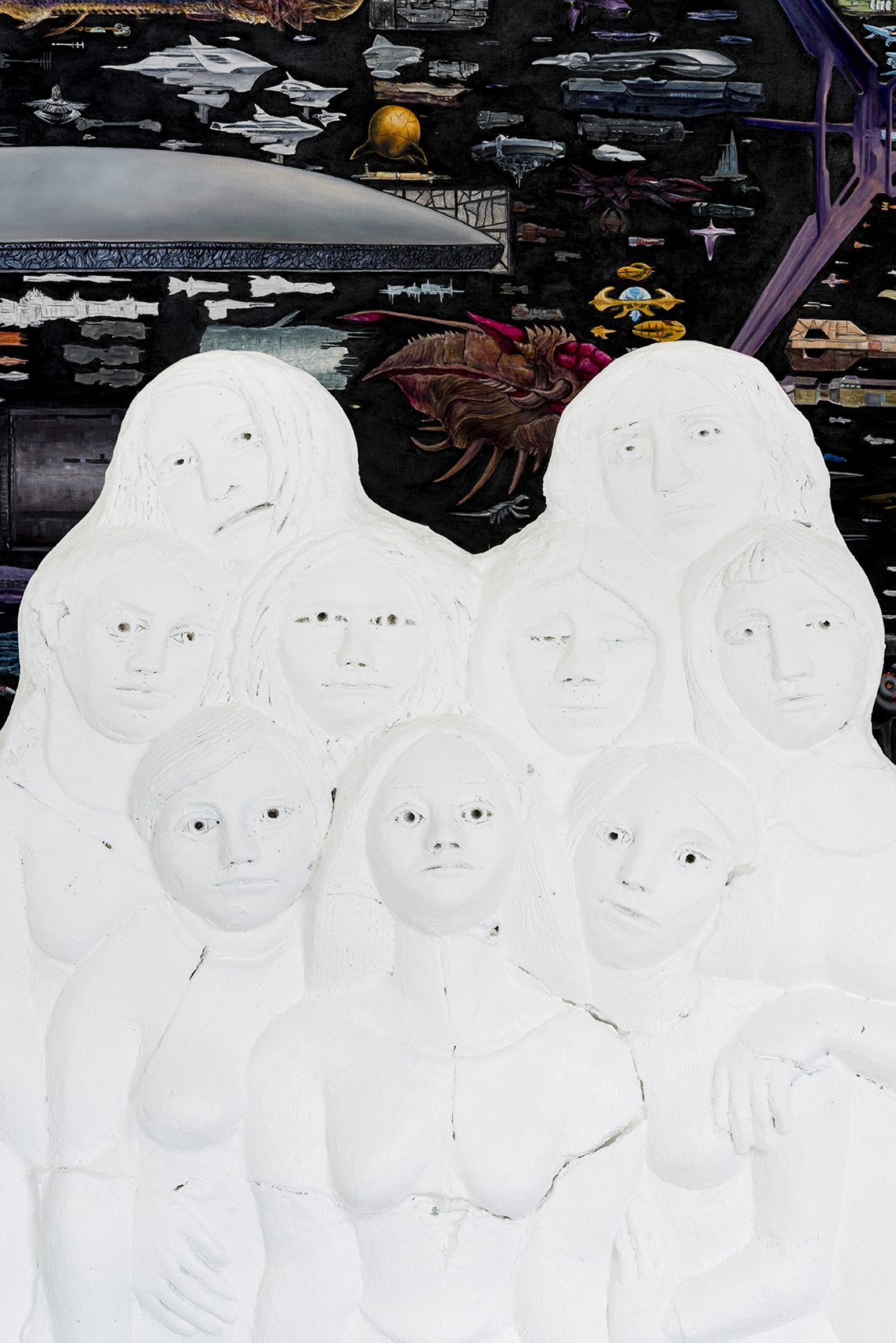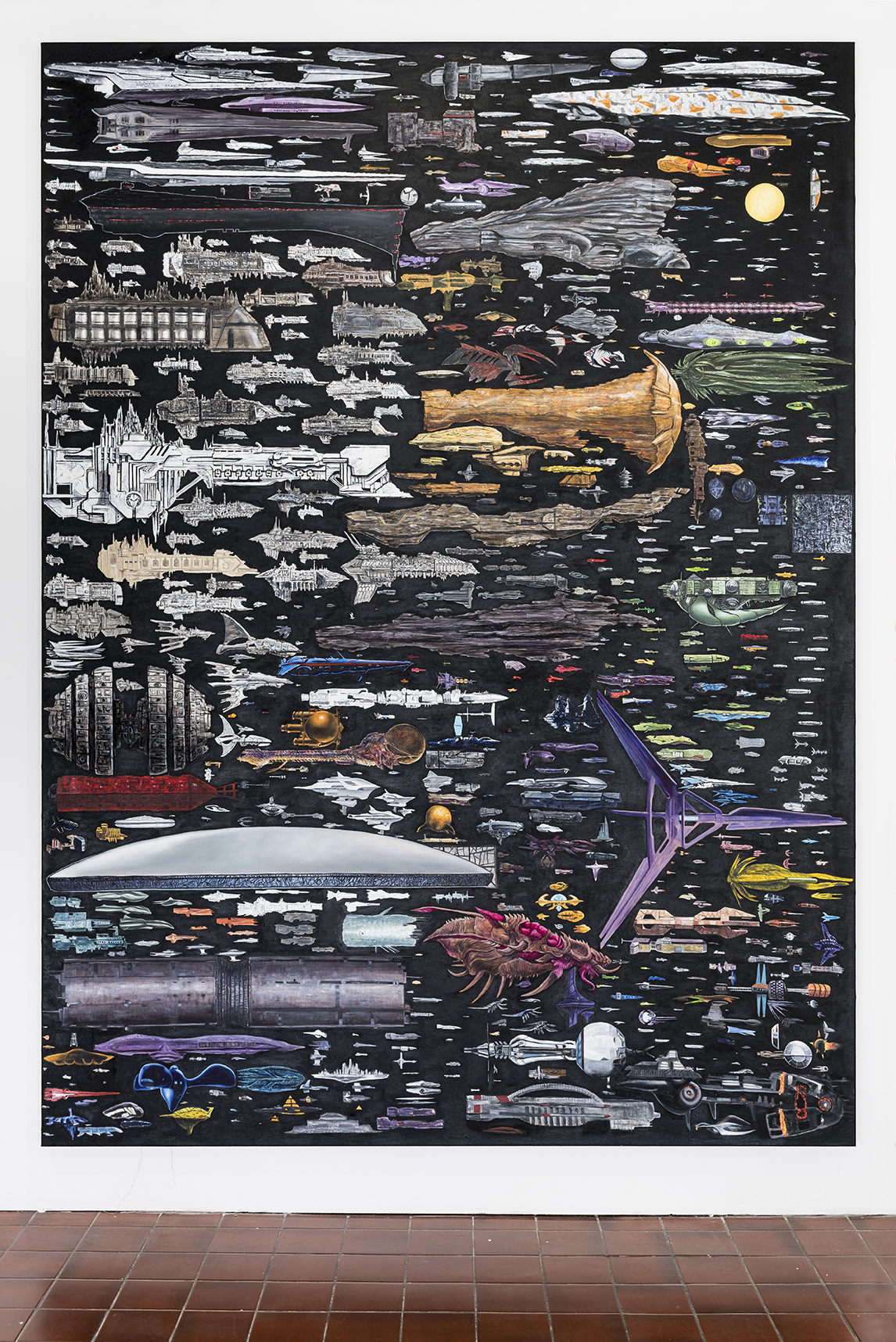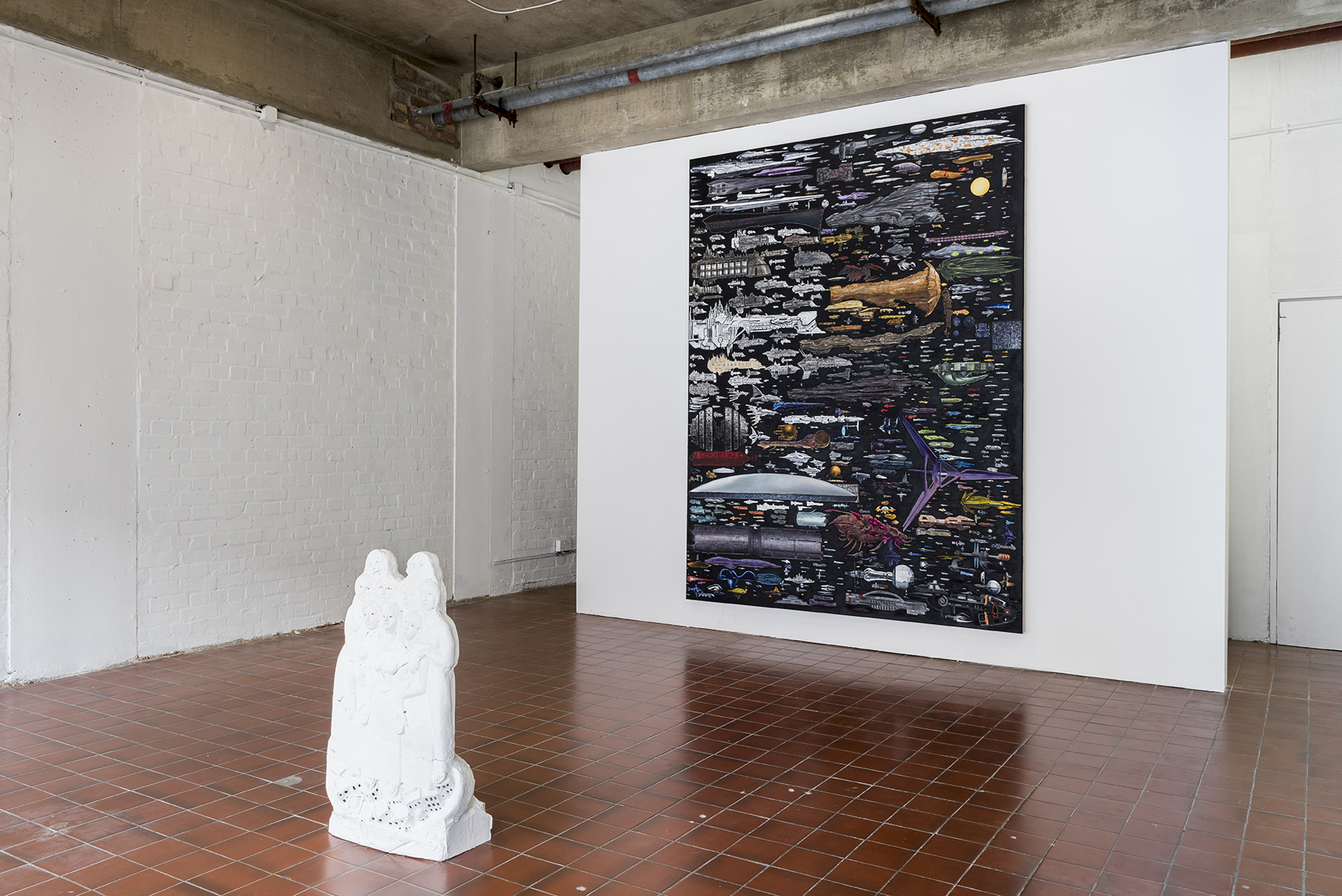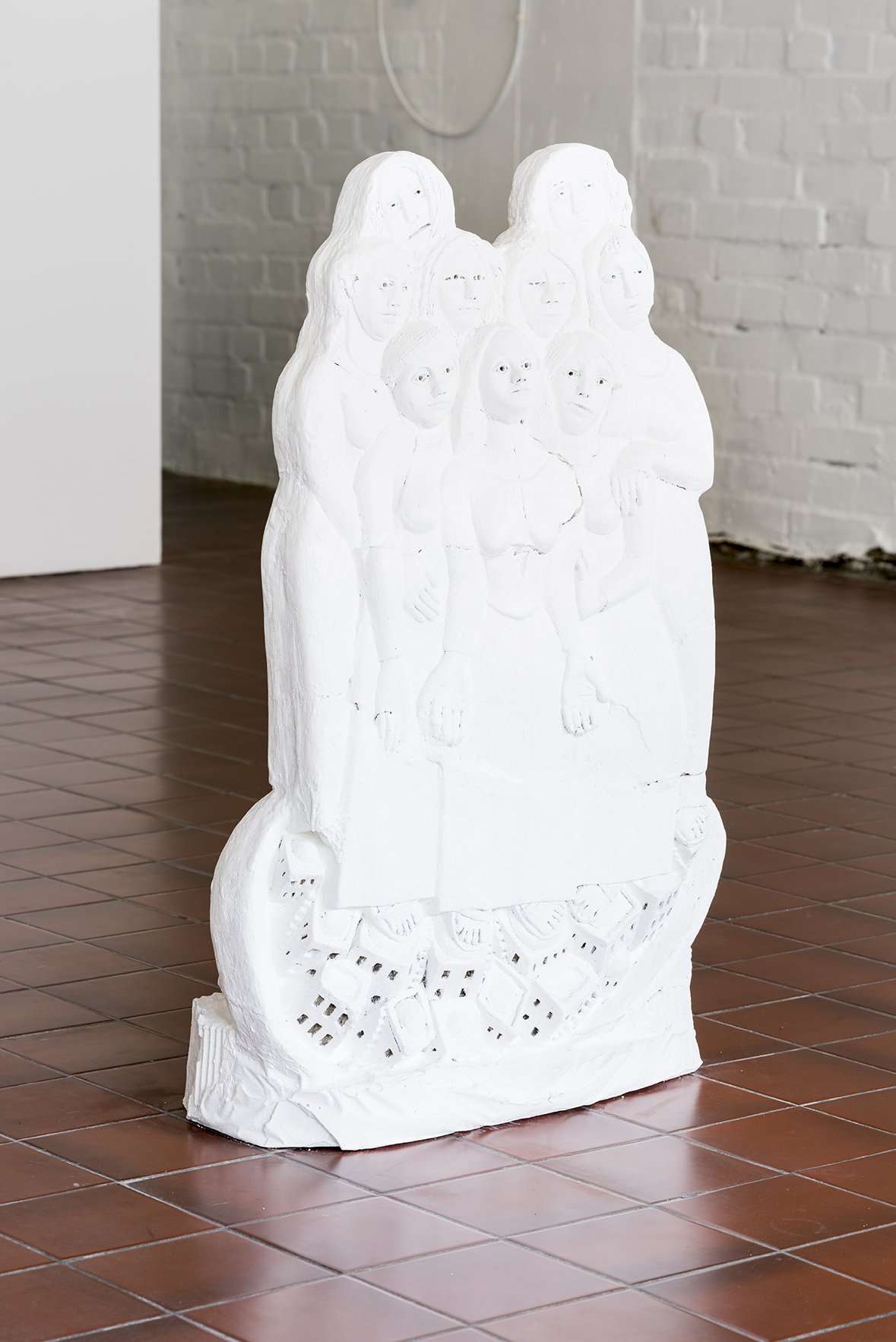
Inhabitants (Spaceships), a large-scale painting that hangs at the back of Chewday’s gallery in London for the show, is taken from a starship size comparison chart that the artist found on the online animator’s forum deviantart.com. The chart, uploaded by DirkLoechel, combines many different spaceships from the science fiction genre, including literature, film and video gaming. Against this, a found and renovated white sculpture stands in stark contrast.
I spoke with the artist.
Can you tell me a little about the work that is currently showing in The Dark Forest?
There is one large painting of spaceships from science fiction (films and video games) and a smaller plaster sculpture placed on the floor near to the middle of the room. The painting is a chart that brings the diverse spaceships into a size comparison structure. It gives an idea of the wealth of invention and imagination in the science fiction genre. The sculpture adds a counterweight to the painting, with a group of women standing on a city or village. It is more grounded, gravity bound.
How did you first come across the starship size comparison chart that Inhabitants (Spaceships) takes its cue from? Do you often engage with the online community in this way?
I came across the chart while googling spaceships in general. I’m not active on deviantart.com where user DirkLoechel uploaded the image and started the conversation around the chart. I was mainly interested in the act of translating or adapting the image to a large scale oil-on-canvas format as a way to engage previous paintings and the idea of the ship throughout history and time.

Ships have many connotations, as discussed in the adjoining text. What do they bring up for you?
Samuel Luterbacher, in the exhibition text, writes “The ship itself is a threshold between worlds, a contact zone for communities across time. Thus the vessel is not the repository for one imagination, but many. The ship’s image always carries multiple histories; hopes and desires mingle with catastrophe and annihilation, shifting within different periods and cultures.”
The ship is an ambiguous entity. It holds the promise of adventure, discovery, encounter, but also a potential for colonial endeavours or types of exploration. I think we are in an interesting moment in time where you can see an explosion of science fiction narratives including spaceships, and upcoming missions to Mars and a general technological acceleration.
At the same time, there is a growing awareness of past and present colonial projects and the many physical and mental injuries they can inflict on people. A recurring question is whether humans should venture into space or take care of Earth first, solving the renewable energy question for example. The painting and sculpture open a space and larger time horizon for these reflections. Throughout history, the ship has not just been a physical object, but a vessel for ideas and concepts as well.

Many apparently opposite ideas come together in your work—past, present and future, old and new, reality and fantasy. Do you hope to provide a more rounded understanding of these terms, or to highlight the incongruity?
We can witness the blurring of lines between real and fictional worlds. Fiction is intrinsically linked to reality and vice versa. We tell stories to make sense of reality, and reality informs fiction. I’m not working towards some kind of grand narrative or formula, but trying to see how things are strangely interrelated, constantly informing each other as if entangled.
There’s a powerful dynamic between the two works in the show. Did you create the pieces in conversation with one another—and if so, how did they play off each other as they were being created—or were they formed very independently?
They were formed independently. I found the sculpture in the courtyard of my old studio in Bow and kept it over several years without knowing what to do with it. When I decided to paint the spaceship chart, it suddenly made sense to restore the sculpture and exhibit it together with the painting. The two works enter a dialogue. The sculpture with the ships, in my view, gives a sense that we humans are all nomads with destinies unknown, striving to explore and settle, or simply navigate life, accepting or finding what is in front of us.
‘The Dark Forest’ shows until 1 July at Chewday’s, London. chewdays.com. All images courtesy the artist and Chewday’s, London.







